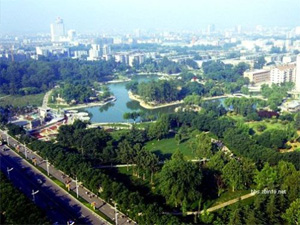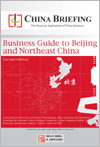Zibo Returns to its Former Silk Road Glory
 Sept. 29 – During the Han and Tang Dynasties, Zibo, at the center of Shandong province, was a major source of the commodity that gave the Silk Road its name. Today, Zibo continues to be an important industrial base because, though now its the city’s rich resources in coal, kaolin and other chemicals that makes it a must stop.
Sept. 29 – During the Han and Tang Dynasties, Zibo, at the center of Shandong province, was a major source of the commodity that gave the Silk Road its name. Today, Zibo continues to be an important industrial base because, though now its the city’s rich resources in coal, kaolin and other chemicals that makes it a must stop.
The city has 5 districts and 3 counties under its jurisdiction. Each district is only 20 kilometers apart from each other making transportation within the city easy. The city is well connected by road to the capital, Jinan and to other major destinations via the national network. Zibo is linked to the provincial capital of Jinan via a high speed rail link that only takes 30 minutes.
Zibo’s air transportation needs are met by the Jinan International Airport. The airport is located around 3 kilometers from the capital. It has flights to 38 domestic destinations as well as international flights. Businesses in the city use access to the Qingdao Port to ship goods. The port is located at the Jiaozhou Bay of the Shandong Peninsula, facing Japan and Korean Peninsula. It is a natural deep sea port that is usable all year round. The port can be found at the beginning of the Qingdao-Jinan Expressway and Jiaozhou-Jinan Railway; making it ideal for cargo transport.
Zibo spans an area of 5,938 square kilometers with a total population of 4.2 million. According to 2007 data, the city’s GDP amounted to RMB194.5 billion, an increase of 16 percent. Per capita disposable income for urban residents reached RMB15,849 while retail sales came in at RMB59.3 billion.
During the same period, exports reached US$2.1 billion and imports US$1.7 billion. Fifty one new FIEs invested in the city and industrial production value amounted to RMB443.8 billion. Its main industrial categories are: petrochemical, ceramics, textile, silk, medicine, building material, metallurgical, electromechanical, plastics, electronics and electric power.
Zibo is rich in natural resources with 53 kinds of mineral reserves. Shandong province has huge supplies of coal, iron, bauxite, coal clay, chemical limestone and pottery clay. The city also serves as a communications and telecommunications hub. It is one of the processing centers for postal services in the country.
Industrial products are a major industry in the province. These include raw oil, ceramics, textiles, silk, analgesic-antipyretic, middle and small motors, electrolytic aluminum, water pumps, refractories, cement, insecticide, synthetic ammonia, glazed tiles, and chemical fibers.
The Zibo High and New Technology Industrial Development Zone was approved by the State Council in November 1992 and is located north of downtown; nearby the Jinan-Qingdao Highway. The zone has a developed infrastructure costing RMB2.6 billion which includes running water, gas and power supply, heating system, road facilities, telecommunication, sewage treatment, cable television, broadband network and land leveling. It processes goods from 1000 companies, 40 of which have a total sales income of more than RMB10 million. There are about 151 foreign-invested enterprises with an estimated contractual foreign capital of US$356 million.
 This article was aggregated from the forthcoming China Briefing Regional Guide to the Beijing and Northeast China, which will be available after the National October Holidays, priced at US$25 plus p&p. The book details Beijing and the provinces Hebei, Jilin, Liaoning, and Shandong, and the Northeast cities of Changchun, Dalian, Dandong, Harbin, Jinan, Shenyang, Shijiazhuang, Qingdao, Tianjin, Yantai and Zibo. Pre-publication orders can be made through sales@china-briefing.com.
This article was aggregated from the forthcoming China Briefing Regional Guide to the Beijing and Northeast China, which will be available after the National October Holidays, priced at US$25 plus p&p. The book details Beijing and the provinces Hebei, Jilin, Liaoning, and Shandong, and the Northeast cities of Changchun, Dalian, Dandong, Harbin, Jinan, Shenyang, Shijiazhuang, Qingdao, Tianjin, Yantai and Zibo. Pre-publication orders can be made through sales@china-briefing.com.
Inquiries or assistance with investment in Zibo can be directed to Dezan Shira & Associates at info@dezshira.com.
- Previous Article Wen Jiabao: China GDP Growth Will Continue Despite Global Slowdown
- Next Article Beijing Reintroduces Car Restrictions in Light of Popular Support

























